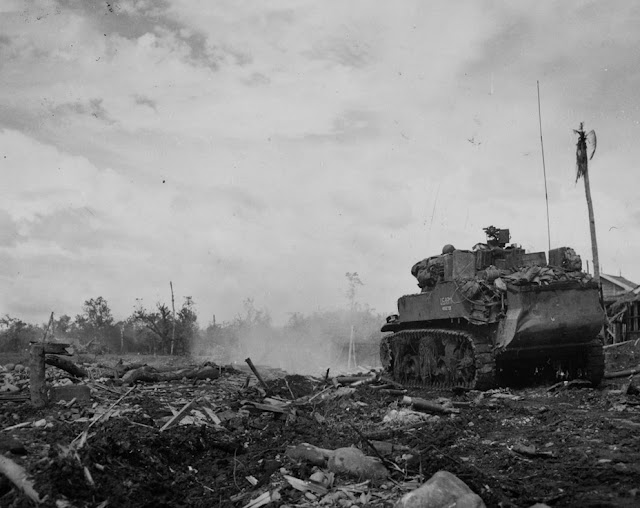They didn't in real life...
They were at the end of the day well made, reliable light tanks (I say light they were about the same weight as a PzIII and Crusader) but were a then obsolete design but made a difference at Buna when they arrived but where vulnerable to 25mm AAA cannon fire which saw 4 of them knocked out.
The AA gun was eventually 'sniped' by a 25 pounder gun used in the direct role but the fact remained that they were available and were better than no tank
(I suspect the real reason they saw little use later in the SWP campaign was simply because better tanks were available and were used in relatively low numbers!)
Its a shame they were not able to be deployed earlier in that battle and in greater numbers
Had they been able to get a couple to the Triangle then again I am certain that US and Aussie losses would be far less given their ability to deal with the log bunkers the Japanese were so great at constructing.
Steel and HE saving blood.
CS gun tanks firing HE would have been better as would Lees with their 75mm guns!
But maybe Buna will not be necessary ITTL!

